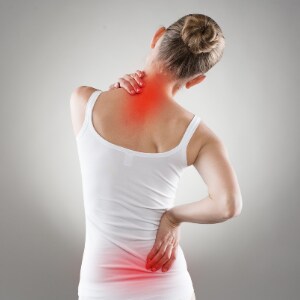Why We Care About Pain Part 1: What is Pain?
Our nervous systems are marvelously complex. For example, signals for acute versus chronic pain pass through specific regions of the spinal cord. For instance, your brain instantaneously knows when you stub your toe because the accompanying pain signals navigate a unique collection of spinal cord nerves called the spinothalamic tract. And the signals for chronic pain, such as dull and ongoing, arthritic low back pain, transmit within defined segments of the spinal cord known as the dorsal column.

 Pain is also classified as mechanical, inflammatory, or neuropathic. Mechanical pain is associated with anatomical irritation. This explains why we feel a shooting pain, also called radiating pain, when a herniated disc or bone spur rub against nearby nerve roots. Inflammatory pain is associated with tissue damage, such as injury, arthritis, or post-operative trauma. This type of pain is localized to specific areas. A good example of neuropathic pain is peripheral neuropathy related to diabetes. Also, sometimes a subset of our nervous system called the sympathetic nervous system is out of control.
Pain is also classified as mechanical, inflammatory, or neuropathic. Mechanical pain is associated with anatomical irritation. This explains why we feel a shooting pain, also called radiating pain, when a herniated disc or bone spur rub against nearby nerve roots. Inflammatory pain is associated with tissue damage, such as injury, arthritis, or post-operative trauma. This type of pain is localized to specific areas. A good example of neuropathic pain is peripheral neuropathy related to diabetes. Also, sometimes a subset of our nervous system called the sympathetic nervous system is out of control.
However, pain is also protective. Imagine taking a casserole dish out of the oven without oven mitts! And the pain that follows a broken arm serves as a reminder to keep your arm stationary so it heals properly. On the other hand, a lack of movement because of the fear of painful injury or reinjury is known as kinesiophobia, such that “kinesio-” means movement and “phobia” means fear. This type of fear can cause someone to think the worst-case scenarios will happen every time they move. But when the time is right, movement is just what the doctor ordered.
How important is mobility?
The main benefit of mobility exercises for patients experiencing inflammatory pain is the improved circulation in their areas of injury. Here the increased blood flow brings more and more nutrients to the cells while washing away cellular by-products which promotes healing. This is especially true after surgeries or trauma, and particularly in the early to subacute phases (up to 3 months since onset).
When pain is chronic, exercises simply help you move better. After all, exercise is medicine and they say practice makes perfect. For people with arthritis, pain levels are typically elevated in the morning and then subside later in the day as a result of being active. However, if arthritic pain returns during the day, gentle stretching and strengthening exercises can diminish the level of severity. In many cases, aquatic exercises are the perfect fit. For instance, the Water Flex classes held at the Ernsthausen Aquatic Center help ease joint pain and muscle aches. Relaxed in their warm-water pool the water’s buoyancy supports you when stretching, and the light resistance is good for walking and other activities that might seem impossible on land.
Next week I explain the role of a pain management program, including image-guided pain management.
About Kevin
Kevin Wininger R.T.(R) is as a radiology technologist and exercise physiologist at Fisher-Titus Medical Center. This editorial is based on several articles he’s written on the treatment of pain. MRI exams, CAT scans, and x-ray films can be useful in helping your doctors and physical therapists develop a treatment plan aimed at reducing your pain and improving your mobility.
